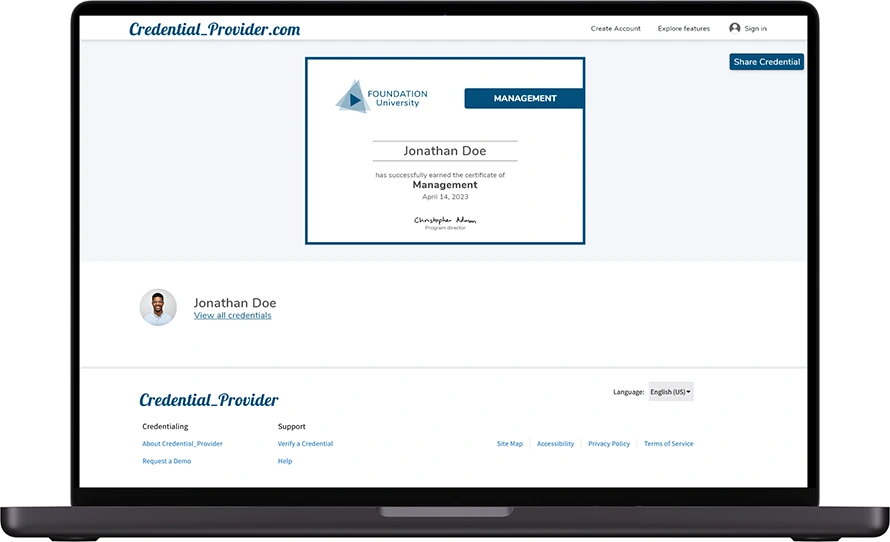The concept of white labeling is frequently highlighted by most digital credential platforms, though it can imply vastly different realities. The fundamental functionalities of a credentialing platform include:
- Configuring, issuing, and sending credentials to learners in the form of accessible links;
- Enabling learners, or individuals to whom they have shared their credential, to accurately view and verify these links;
- Facilitating the integration of these links on LinkedIn, in resumes, etc.;
- Ensuring these links are compatible with standards and micro-certifications like OBv2, v3, VCs, etc.
In this article, we will clarify what “white labeling” means for these key features and explain why BCdiploma stands out as the only market player that prioritizes its clients’ brand first and foremost. Indeed, BCdiploma turns your credentials into true marketing assets through its 100% white-label solution.
In which interface are your credentials displayed?
The majority of credentialing services display your credentials within their own platform, emphasizing their brand and associated services: creating an account, viewing other credentials, etc. Every time you view your own credentials, it’s an opportunity for the platform to promote its offerings.
The “white label” option often boils down to a simple adaptation of the “slug” or the format of the provided link, for example:
https://www.your_institution.credential_provider/credential/ID
Here are two examples of how this works, for a badge and a diploma:


BCdiploma has chosen a system that, on the contrary, puts your institution in the forefront!
- The credentials, with a 100% custom design, are displayed in full page: they are not encapsulated in a platform.
- The links to your credentials can be in the form of https://www.your_institution.edu/credential/ID, and therefore can be integrated into your own institutional website.

In other words, for your learners, partners, and recruiters, the credential appears as an integral part of your own ecosystem.
Where is the credential viewed in the digital environment?
On most credentialing platforms, clicking on a credential link directs you to the digital credential platform, such as credential_provider.com. This lands you on an application over which your institution has no control, and which is operated, managed, and maintained by your provider.
Conversely, with BCdiploma, the credential is represented as an independent web page, completely detached from any platform or application. You are free to publish it wherever you prefer within your institutional website’s structure. Some of our clients even embed it within a dedicated page while keeping the main menu of their site visible, immediately driving qualified traffic to your site.
How is the credential verified?
With BCdiploma, trust is established without intermediaries, leading to a full white-label approach: data is accessed directly from a blockchain. If desired, the institution can implement an automated verification service right from its own institutional website.
For more information on this topic, please visit: Digital Credentials: when decentralization builds trust
In summary, how does my institution’s brand benefit from credentials?
Luc Jarry-Lacombe, CEO of BCdiploma, explains how the white-label concept enabled by BCdiploma has a primary goal: to allow institutions to highlight their brand and ecosystem through a “credential-centric” design, which does not confine users to the environment of a third-party application.
“Our competitors are Platform-Centric, showcasing your credentials within their own branded ecosystems and leveraging your credential data.
Working with them, strengthen their platform.
Partnering with us, empowers your institution and your brand.”
